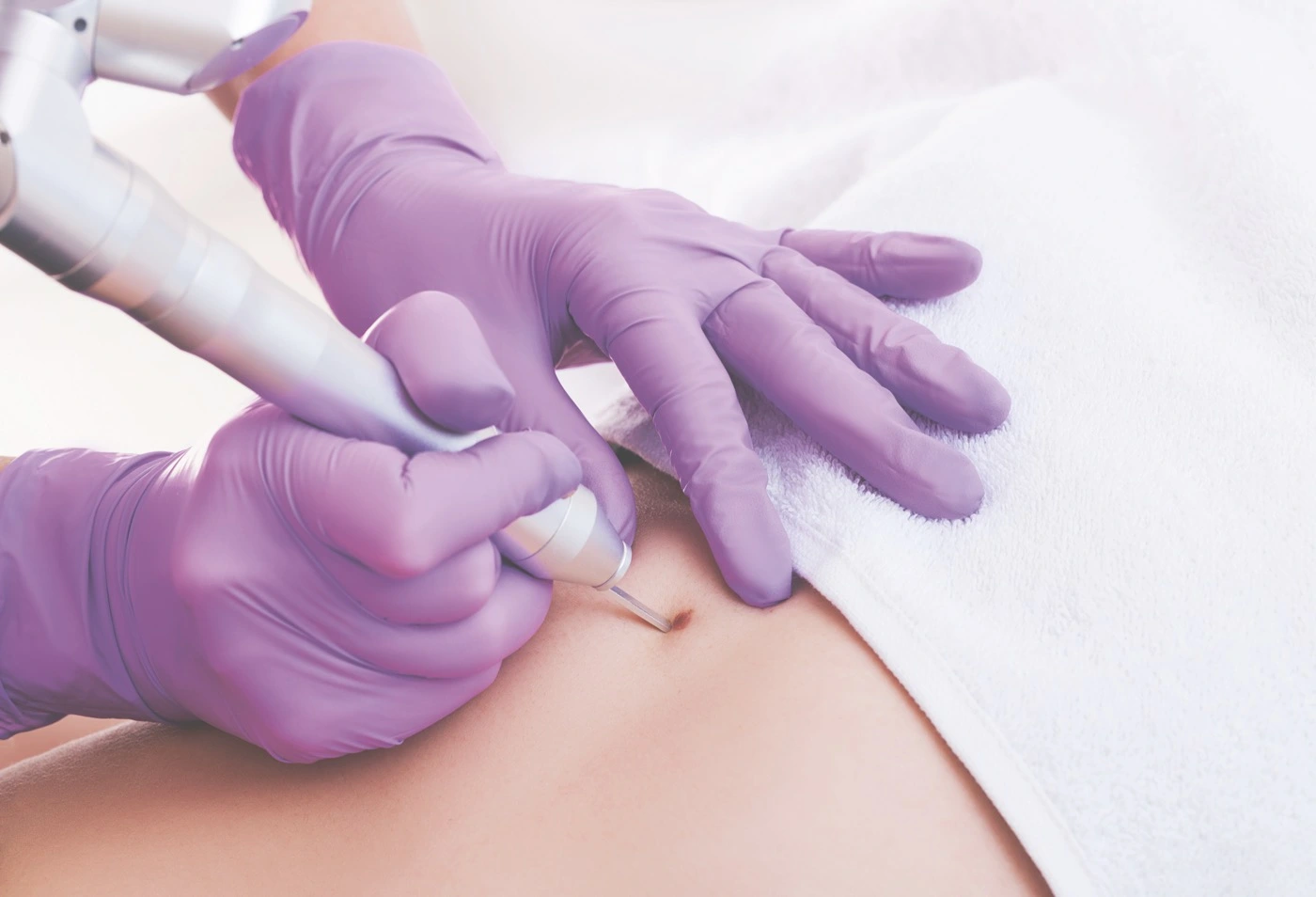News & Articles

Beyond Surgery: Treating Skin Cancer Today

Surgery is often the first step, but a complete treatment plan includes targeted therapies, recovery support and lifestyle changes to improve long-term outcomes.
THE WORD ‘CANCER’ OFTEN STRIKES FEAR, BUT ADVANCES IN TREATMENT HAVE MADE SKIN CANCER HIGHLY TREATABLE. Skin cancer — an abnormal and uncontrolled growth of skin cells — is frequently removed through surgery. However, treatment often extends beyond the scalpel.
For the best possible outcomes, treatment is tailored to each patient and may include targeted therapy, chemotherapy, immunotherapy or other supportive options. Advances in medicine have enabled more personalised treatment plans — reducing recurrence and improving quality of life.
When determining a treatment plan, the medical team considers several factors, including the cancer’s size, location, stage, depth and genetic mutations. The patient’s overall health, fitness level, preferences and concerns also play a role.
Surgery Comes First, But It’s Not the Whole Story
For most patients, surgery is the main treatment, especially for early-stage skin cancer. Several surgical techniques are available, depending on tumour size, location and depth.
Wide local excision surgery is one way to remove cancerous tissue, along with a margin of healthy skin to help prevent recurrence. If the cancer has spread beyond the skin, surgery may also involve removing nearby lymph nodes.
A procedure known as Mohs surgery may also be an option for some skin cancers in delicate areas where a wide excision might be difficult, such as the face, ears or neck. Mohs surgery is a precise surgical technique used to treat skin cancer. The procedure is named after Dr Frederic E Mohs, who developed this technique in 1938 to remove skin cancer lesions. It allows the surgeon to wield precise control of the margins by gradually removing thin layers of cancerous tissue while preserving as much healthy skin as possible.
During Mohs surgery, the surgeon removes thin layers of skin one layer at a time and examines each layer under a microscope to determine if any cancer remains. This procedure continues until the tissue is cancer-free. The goal of this treatment is to minimise the chance of the cancer growing back, preserve as much healthy skin as possible and maximise the functional and cosmetic outcome.
Mohs surgery is an improvement to standard surgery (local excision), which involves removing the visible cancer with standard clear margins of surrounding healthy tissue all at once. In contrast, Mohs surgery allows the Mohs surgeon to verify that all cancer cells have been removed at the time of surgery. This increases the chance of a cure and reduces the need for additional treatments or further surgery.
Mohs surgery is especially useful for skin cancers that:
- Have a high risk of recurrence or that have recurred after previous treatment
- Are located in areas where you want to preserve as much healthy tissue as possible, such as around the eyes, ears, nose, mouth, hands, feet and genitals
- Have borders that are hard to define
- Are large or aggressive
Fighting Cancer with More Than a Scalpel
Some patients require additional treatments.
Targeted therapy is used when cancer has specific genetic mutations that can be treated with drugs designed to block cancer growth.
Chemotherapy, either applied topically or administered systemically, destroys cancer cells or stops them from dividing. It is considered when the cancer has spread or does not respond to other treatments.
Immunotherapy helps the body’s immune system recognise and fight cancer. A recent advancement is tumour-infiltrating lymphocytes (TILs) therapy, a type of immunotherapy in which immune cells are extracted from a patient’s tumour, modified and reintroduced to attack cancer cells. This approach has been approved by the United States Food and Drug Administration for the treatment of advanced melanoma.
Radiation therapy (or radiotherapy) may be recommended if surgery is not an option or as an additional treatment after surgery. Powerful, high-energy beams target cancer cells and may be used when the skin cancer has spread to lymph nodes or cannot be fully removed surgically.
With today’s treatment options, skin cancer outcomes continue to improve. According to the Singapore Cancer Registry Annual Report 2022, non-melanoma skin cancer had the highest five-year survival rate among the 10 most common cancers — 93.2 per cent for males and 97.5 per cent for females.
What Happens After Treatment Matters, Too
After surgery, proper wound care, pain management and monitoring for complications — such as signs of infection — are essential. Pain is usually well controlled with prescribed medication and improves as the wound heals.
For large skin cancers, reconstructive surgery may be needed to restore appearance. This involves grafting healthy skin from another part of the body to cover the wound.
Scarring varies from person to person. While some scars fade, others may become thick or raised. If scarring is a concern, speak to your doctor.
Other treatments, such as chemotherapy, may cause side effects such as fatigue, nausea or appetite loss. Seek advice from your care team on managing these symptoms.
Regular follow-ups help track recovery, detect recurrence early and support long‑term health.
Looking After Mind and Body
Cancer treatment is not just physical — it affects emotional and mental well-being, too. Patients may experience anxiety or low moods, especially when coping with the fear of recurrence.
Supportive therapies play a crucial role in helping patients and their families feel empowered during the cancer journey. Getting guidance from your care team — such as for referrals to support groups, counselling or mental healthcare — can make a difference.
Nutrition also plays a key role in recovery. Eating well during and after treatment helps rebuild strength and muscle, boost immunity, and promote healing. A dietitian can provide personalised nutritional guidance.
Beyond recovery, adopting healthy lifestyle habits — including sun protection, smoking cessation and proper skincare — can help prevent further complications. With the right support, patients can return to a full and healthy life after cancer.
Supportive therapies help patients and their families feel empowered during the cancer journey.
SPOT THE SIGNS
Early detection makes skin cancer highly treatable. Regular self-examinations help identify new or changing moles, patches or unusual growths. Dermatologists recommend annual skin checks, particularly for those with fair skin, a history of sunburns or a family history of skin cancer.
Use the ABCDE rule for self-checks:
- Asymmetry: One half looks different from the other.
- Border irregularity: Edges are uneven, irregular or poorly defined.
- Colour variations: More than one colour, such as varying shades of brown, black, white, red or blue.
- Diameter larger than 6mm: About the size of a pencil eraser.
- Evolving appearance: Changes in size, shape or colour over time.
When in doubt, seek medical attention promptly.
| POSTED IN | Cancer Treatments |
| TAGS | cancer latest breakthrough, cancer quality of life, skin cancer, surgery |
| READ MORE ABOUT | Melanoma |
| PUBLISHED | 01 May 2025 |
